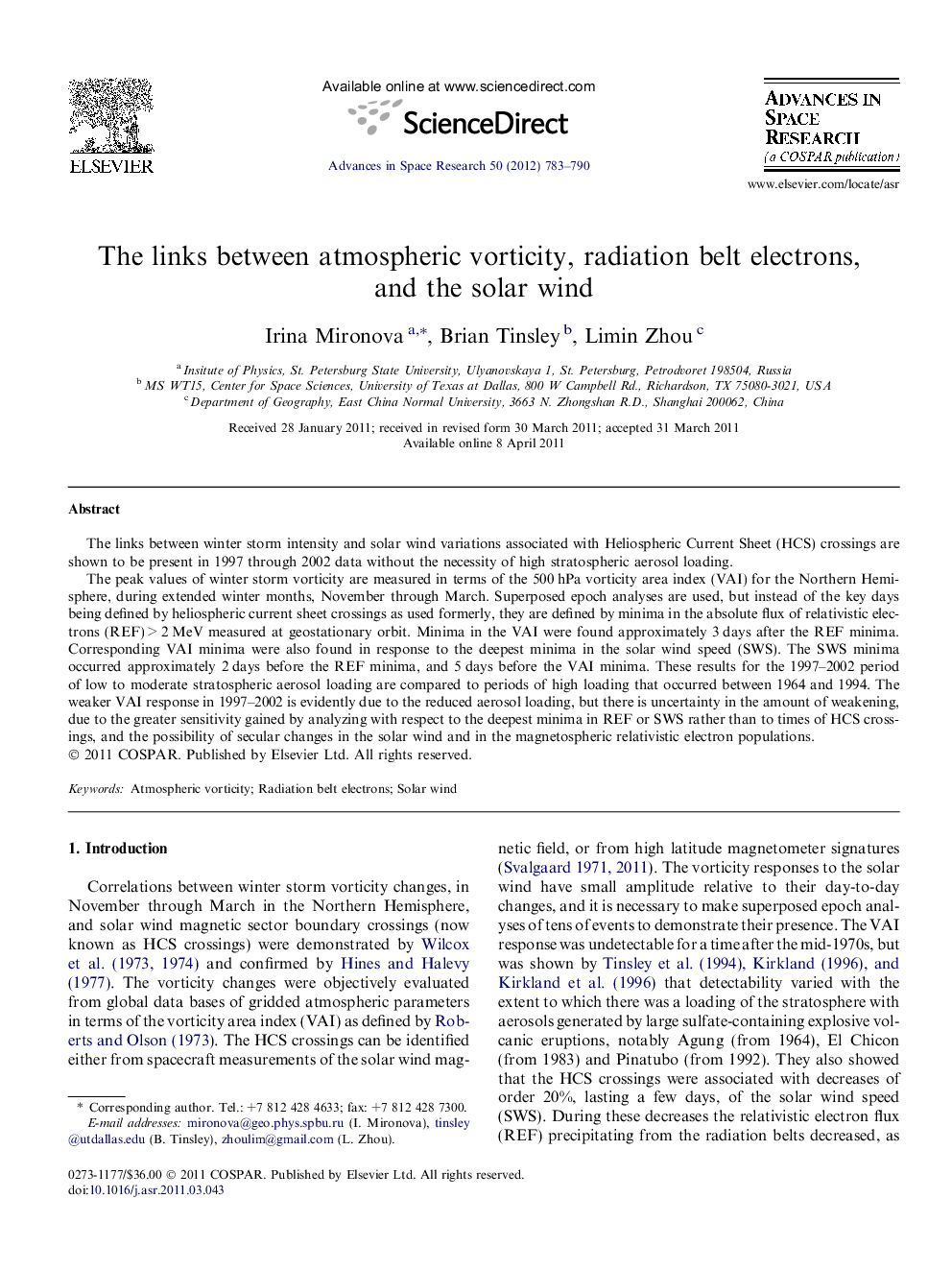| Article ID | Journal | Published Year | Pages | File Type |
|---|---|---|---|---|
| 1765108 | Advances in Space Research | 2012 | 8 Pages |
The links between winter storm intensity and solar wind variations associated with Heliospheric Current Sheet (HCS) crossings are shown to be present in 1997 through 2002 data without the necessity of high stratospheric aerosol loading.The peak values of winter storm vorticity are measured in terms of the 500 hPa vorticity area index (VAI) for the Northern Hemisphere, during extended winter months, November through March. Superposed epoch analyses are used, but instead of the key days being defined by heliospheric current sheet crossings as used formerly, they are defined by minima in the absolute flux of relativistic electrons (REF) > 2 MeV measured at geostationary orbit. Minima in the VAI were found approximately 3 days after the REF minima. Corresponding VAI minima were also found in response to the deepest minima in the solar wind speed (SWS). The SWS minima occurred approximately 2 days before the REF minima, and 5 days before the VAI minima. These results for the 1997–2002 period of low to moderate stratospheric aerosol loading are compared to periods of high loading that occurred between 1964 and 1994. The weaker VAI response in 1997–2002 is evidently due to the reduced aerosol loading, but there is uncertainty in the amount of weakening, due to the greater sensitivity gained by analyzing with respect to the deepest minima in REF or SWS rather than to times of HCS crossings, and the possibility of secular changes in the solar wind and in the magnetospheric relativistic electron populations.
